Hey there, fellow foodies! Today, I’m going to share with you a delightful and aromatic recipe that will transport you to the idyllic fields of Provence with every bite – a Lavender Cake! If you have a soft spot for floral flavors and love to indulge in a sweet treat that’s both unique and delightful, this cake is just what you need. Don your aprons, and let’s dive into the world of lavender-infused goodness together!
[ez-toc]
History
The roots of lavender cake can be traced back to the picturesque region of Provence in France, where lavender fields have flourished for centuries. Lavender, known for its aromatic and medicinal properties, has been cultivated in the Mediterranean region since ancient times. The Romans, Greeks, and Egyptians cherished lavender for its soothing fragrance and therapeutic benefits.
Fast forward to the medieval era, and lavender began to find its way into European kitchens. In the Middle Ages, lavender was a popular herb used to flavor food, especially in sweet and savory dishes. It was believed to have mystical properties, protecting against evil spirits and warding off illness.
Over time, the culinary use of lavender evolved, and its incorporation into cakes and pastries became a delightful tradition in the Mediterranean culinary landscape. Bakers and home cooks experimented with different recipes, using lavender to infuse their creations with a unique and delicate flavor.
The popularity of lavender cake continued to grow, spreading to various parts of Europe and beyond. As trade routes expanded, lavender and its culinary applications made their way to different continents, influencing diverse cuisines worldwide.
However, it wasn’t until the modern era that lavender cake gained significant attention globally. With a revival of interest in traditional and rustic flavors, lavender cake emerged as a trendy dessert among food enthusiasts and professional bakers alike. Its unique taste and captivating aroma made it a sought-after delicacy for special occasions and celebrations.
The advent of culinary shows, blogs, and social media platforms further propelled the popularity of lavender cake. Home bakers and professional chefs started sharing their innovative lavender-infused creations, inspiring people to try their hand at this delightful treat.
In recent years, the use of lavender in culinary arts has expanded beyond cakes, with lavender-infused ice creams, cookies, macarons, and cocktails becoming favorites among adventurous food lovers. The versatility of lavender and its ability to complement various flavors have made it an exciting ingredient for culinary experimentation.
Today, lavender cake continues to be celebrated as a symbol of elegance and refinement in the world of desserts. Its delicate floral taste provides a refreshing contrast to the richness of traditional cakes, making it a delightful addition to any dessert table.
As we journey through the history of lavender cake, we realize that this sweet delight has come a long way, carrying the essence of ancient traditions and the spirit of culinary innovation. So the next time you savor a slice of lavender cake, remember that you are partaking in a rich and fragrant legacy that spans centuries.
Time
| Step | Time |
|---|---|
| Gathering Your Ingredients | 15 minutes |
| Preparing Lavender-Infused Goodness | 20 minutes |
| Baking the Lavender Cake | 25-30 minutes |
| Lavender Frosting | 15 minutes |
| Serving and Storing Your Lavender Cake | 10 minutes |
| Lavender Cake Variations | 15 minutes (per variation) |
Please note that the cooking and preparation times are approximate and may vary depending on individual experience and kitchen equipment. It’s always a good idea to give yourself some extra time to enjoy the process and create a delightful Lavender Cake without rushing. Happy baking!
Ingredients
| Ingredients | Quantity for 2 Servings |
|---|---|
| All-Purpose Flour | 1 cup |
| Granulated Sugar | 1/2 cup |
| Culinary Lavender or Lavender Extract | 1 tablespoon (or a few drops) |
| Baking Powder | 1 teaspoon |
| Baking Soda | 1/4 teaspoon |
| Salt | A pinch |
| Unsalted Butter, softened | 1/2 cup |
| Eggs | 2 |
| Milk | 1/2 cup |
| For Lavender Frosting: | |
| Unsalted Butter, softened | 1/2 cup |
| Powdered Sugar | 1 1/2 cups |
| Lavender Extract | A few drops |
| Fresh Lavender Sprigs or Edible Flowers (for garnish) | As desired |
Please adjust the quantities accordingly if you plan to serve more people or have larger portions. Enjoy baking and savoring the delightful Lavender Cake!
Directions
Step 1: Gathering Your Ingredients
Before we dive into the baking magic, make sure you have all the ingredients on hand. Double-check your pantry and refrigerator to ensure you have everything you need to craft this fragrant delight.
Step 2: Preparing Lavender-Infused Goodness
- In a small saucepan, warm the milk over low heat. Add the dried culinary lavender or a few drops of lavender extract to the milk and stir gently. Let it infuse for about 10 minutes, allowing the milk to soak up the lovely lavender aroma. Once infused, strain the milk to remove the lavender.
- Preheat your oven to the required temperature and grease the cake pans to prevent the cake from sticking.
- In a mixing bowl, cream together the softened unsalted butter and granulated sugar until light and fluffy. This process will create the perfect foundation for a moist and tender cake.
- Add the eggs, one at a time, to the creamed mixture, beating well after each addition. This step ensures a smooth batter that incorporates the eggs evenly.
- In a separate bowl, whisk together the all-purpose flour, baking powder, baking soda, and a pinch of salt. Gradually add the dry mixture to the wet batter, mixing until just combined.
- Now comes the magic touch – pour in the infused milk and gently fold it into the batter. The lavender-infused milk will impart its delightful fragrance to the cake, elevating its flavor.
Step 3: Baking the Lavender Cake
- Divide the batter evenly between the prepared cake pans. Ensure the pans are filled to the same level to achieve uniform layers.
- Place the pans in the preheated oven and let the magic happen. Bake the cakes for about 25-30 minutes or until a toothpick inserted into the center comes out clean or with a few moist crumbs.
- Once baked, take the cake pans out of the oven and allow the cakes to cool in the pans for a few minutes. Then transfer them to a wire rack to cool completely.
Step 4: Lavender Frosting – A Luscious Finishing Touch
- In a mixing bowl, cream softened unsalted butter until smooth and creamy.
- Gradually add the powdered sugar to the butter, beating well after each addition. The result will be a luscious buttercream that forms the base of the lavender frosting.
- Add a few drops of lavender extract to the buttercream and mix well. Taste as you go to achieve your desired level of lavender flavor.
- Once the cakes have cooled completely, generously spread the lavender frosting between the layers and on the outside. Feel free to get creative with your frosting techniques for a beautiful and enticing cake.
Step 5: Serving and Storing Your Lavender Cake
- Garnish your Lavender Cake with fresh lavender sprigs or edible flowers for an elegant presentation.
- Serve the cake to your delighted guests and relish the enchanting flavor of lavender in every bite.
- If you somehow have any leftovers (unlikely!), store the cake in an airtight container in the refrigerator. The cake will stay fresh for up to three days, allowing you to savor the lavender goodness for a little longer.
Equipment Required
Nutrition Information
| Nutrition Information | Per Serving (1 slice) |
|---|---|
| Serving Size | 1/8th of the cake |
| Calories | 350 calories |
| Total Fat | 16g |
| – Saturated Fat | 10g |
| Cholesterol | 80mg |
| Sodium | 180mg |
| Total Carbohydrates | 48g |
| – Dietary Fiber | 1g |
| – Sugars | 30g |
| Protein | 4g |
Please note that the nutrition information provided is an estimate and may vary based on the specific ingredients used and portion sizes. Enjoy your Lavender Cake responsibly and savor the flavors guilt-free!
Tips
- Choose High-Quality Lavender: When using culinary lavender or lavender extract, opt for high-quality, food-grade products. This ensures a more authentic and delightful lavender flavor in your cake.
- Properly Measure the Flour: To avoid a dense cake, make sure to measure the flour accurately. Spoon the flour into the measuring cup and level it off with a knife, rather than scooping directly from the bag.
- Don’t Overmix the Batter: When combining the dry ingredients with the wet, be gentle and avoid overmixing. Overmixing can lead to a tougher texture in the cake.
- Infuse Milk Thoroughly: Allow the milk to infuse with lavender for at least 10 minutes. Strain the lavender from the milk to prevent any undesirable texture in the cake.
- Check for Doneness: To determine if the cake is fully baked, use the toothpick test. Insert a toothpick into the center of the cake; if it comes out clean or with a few moist crumbs, the cake is ready.
- Cool the Cakes Completely: Ensure the cakes have cooled completely before frosting them. A warm cake may cause the frosting to melt or become runny.
- Add Lavender Gradually: When adding lavender extract to the frosting, start with a small amount and taste as you go. Lavender can be overpowering, so adjust the flavor to your preference.
Pros & Cons
| Pros | Cons |
|---|---|
| ✅ Unique and Delightful Flavor | ❌ Lavender Flavor may not be Everyone’s Cup of Tea |
| ✅ Aromatic and Captivating | ❌ May be Time-Consuming to Infuse Milk with Lavender |
| ✅ Perfect for Special Occasions | ❌ Culinary Lavender can be Expensive |
| ✅ Beautiful Presentation with Lavender Garnish | ❌ Not Suitable for Those with Lavender Allergies |
| ✅ Versatile – Easy to Experiment with Flavors | ❌ May Require Special Ingredients not Readily Available |
Conclusion
In conclusion, the Lavender Cake recipe is a culinary journey that promises to delight your taste buds and transport you to a world of aromatic bliss. With its unique and captivating flavor, this cake is a true celebration of the enchanting lavender herb. While the delicate floral notes may not be everyone’s cup of tea, it offers a distinctive and elegant treat for those willing to explore new flavors.
The infusion of lavender into the cake and frosting adds a touch of sophistication, making it an ideal choice for special occasions or simply to elevate your everyday dessert experience. The beautiful presentation, adorned with lavender garnish, makes it a show-stopping centerpiece on any dessert table.
Moreover, the versatility of the Lavender Cake recipe allows for endless experimentation. Feel free to try different variations, such as introducing citrus zest or substituting ingredients to suit your dietary preferences. This recipe is a canvas for your creativity, and the possibilities are as vast as your imagination.
While some may find the preparation time for infusing milk with lavender slightly time-consuming, the effort is well worth the delightful outcome. The pros of this recipe, from its unique flavor and delightful aroma to its versatility and celebratory appeal, outweigh any potential cons.
So, if you’re ready to embark on a delectable culinary adventure and experience the magic of lavender-infused goodness, don your aprons and give the Lavender Cake a try. Whether you’re baking it for a special occasion or simply indulging in a delightful treat, this cake promises to leave a lasting impression on your taste buds and the hearts of those you share it with.
Indulge in the sweet symphony of flavors, and let the enchanting Lavender Cake be your gateway to a delightful world of floral delights. Happy baking, and may your kitchen be filled with the captivating aroma of lavender and the joy of culinary exploration!
Facts
- 🌿 Fact 1: Lavender Love Across Centuries 🌿
- Did you know that lavender has been cherished for thousands of years? The ancient Egyptians used it for mummification, while the Romans scented their baths with lavender. Fast forward to the Middle Ages, when lavender found its way into the kitchen, becoming a popular herb in sweet and savory dishes. The love for lavender transcends time!
- 👑 Fact 2: Lavender’s Royal Connection 👑
- Lavender cake holds a regal past! Queen Elizabeth I of England was a fan of lavender-flavored dishes and desserts. Lavender was even used to scent her clothes and surroundings. So, when you’re enjoying a slice of lavender cake, you’re indulging in a treat fit for royalty!
- 🌟 Fact 3: The Star of Herbes de Provence 🌟
- Lavender is a star ingredient in the famous French herb blend, Herbes de Provence. This aromatic blend includes thyme, rosemary, oregano, and marjoram, but it’s lavender that gives it an enchanting twist. A dash of Herbes de Provence can elevate savory dishes, making them truly extraordinary!
- 🎨 Fact 4: Picasso’s Purple Passion 🎨
- The renowned artist Pablo Picasso was so enamored with lavender that he incorporated it into his art. He frequently used a color called “Picasso Lavender,” a shade of pale purple, in his paintings. Just like Picasso’s art, the lavender cake is a masterpiece of flavors and colors!
- 🌼 Fact 5: Lavender – A Symbol of Serenity 🌼
- Lavender is more than just a delightful flavor; it’s also known for its calming and soothing properties. The aroma of lavender is believed to reduce stress and anxiety. So, when you indulge in a lavender cake, you’re not just treating your taste buds but also enjoying a moment of relaxation!
FAQ’s
Can I use dried lavender in the cake?
Yes, you can use dried culinary lavender in the cake. Just make sure it is food-grade and free from additives or pesticides.
Where can I find culinary lavender?
Culinary lavender can be found at specialty food stores, online retailers, or local farmers’ markets. You can also purchase it from specialty spice shops or herbal stores.
Is lavender safe to eat?
Yes, culinary lavender is safe to eat in moderate amounts. However, consuming large quantities may cause digestive issues. Stick to the recommended amount in the recipe for a delightful and safe experience.
Can I replace the eggs to make the cake vegan?
Absolutely! You can use substitutes like applesauce, mashed bananas, or flaxseed gel to replace eggs and create a delicious vegan lavender cake.
How long will the lavender cake stay fresh?
When stored properly in an airtight container in the refrigerator, the lavender cake will stay fresh for up to three days. Enjoy it within this time frame to savor its best flavors and texture.
Can I use lavender essential oil instead of lavender extract?
It is not recommended to use lavender essential oil in culinary preparations, as it is highly concentrated and may not be safe for ingestion. Stick to culinary lavender or food-grade lavender extract for the best results.
Can I make lavender cake gluten-free?
Yes, you can make a gluten-free lavender cake by using a gluten-free all-purpose flour blend in place of regular flour. Check that all other ingredients are also gluten-free to ensure a safe and delicious cake.
Is lavender cake suitable for children?
While lavender is generally safe to consume in small amounts, some children may be sensitive to its taste. It’s best to introduce lavender-flavored desserts to children gradually and in small portions to gauge their response.
How can I enhance the lavender flavor in the cake?
To intensify the lavender flavor, you can increase the amount of culinary lavender used or add a few more drops of lavender extract to the batter and frosting. Remember to taste as you go to achieve your desired level of flavor.
Can I freeze the lavender cake for later consumption?
Yes, you can freeze the unfrosted cake layers for up to three months. Wrap each layer tightly in plastic wrap and place them in an airtight container or freezer bag. Thaw them in the refrigerator before frosting and serving.




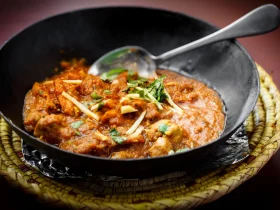

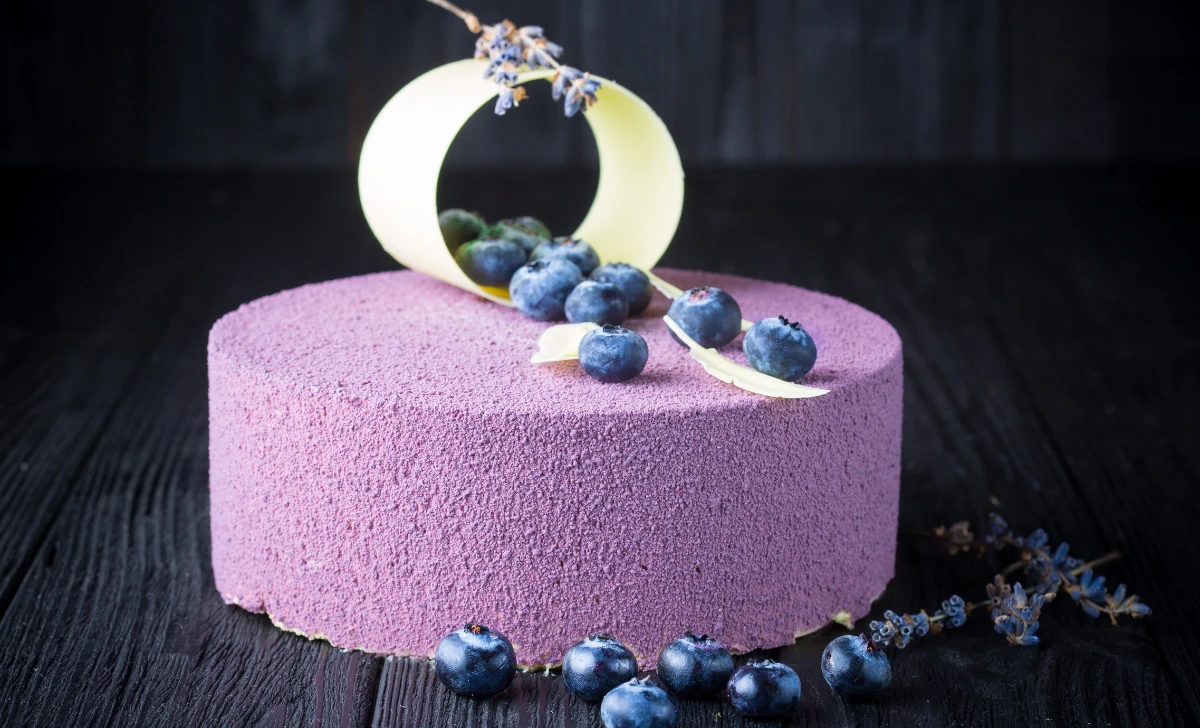

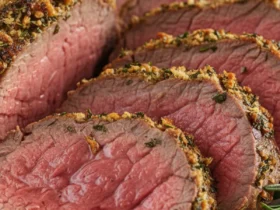
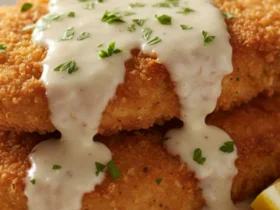
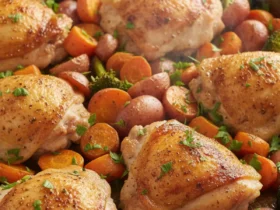
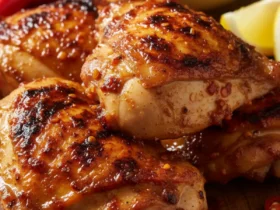
Leave a Review